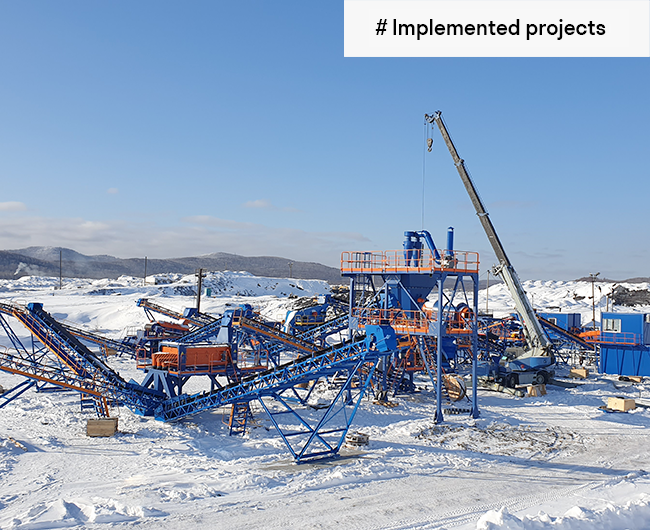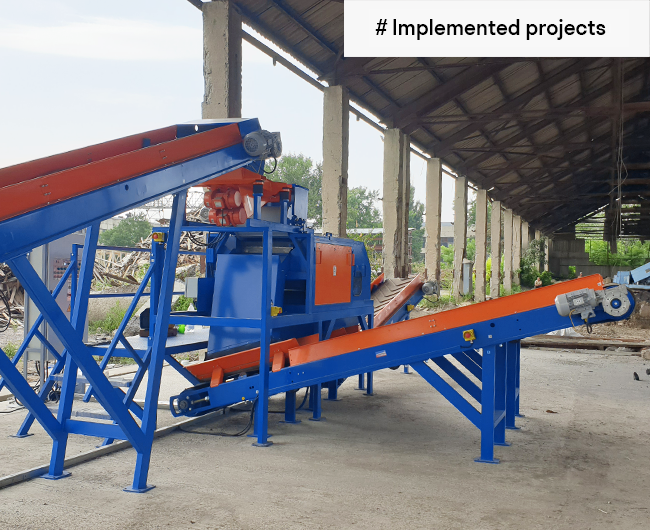Smelter slag recycling

Resoline crushing and screening complex for processing of steel slag
-
Industry: recycling, ferrous metallurgy, nonferrous metallurgy
-
Raw material: shredder residue (ferrous and nonferrous metal scrap)
-
Size of feed material: 0-300 mm
-
Capacity: 10 t/h

Resoline aluminum slag recycling line
-
Industry: nonferrous metallurgy, recycling
-
Raw material: aluminum slag
-
Size of feed material: 2-40 mm
-
Capacity: 5 t/h
What is slag
Slag is a by-product that results from the metallurgical process of steel or non-ferrous metal production. The main components of slag are oxides of silicon, aluminum, calcium and magnesium, as well as some other elements in smaller quantities that may be present in the ore or added during processing. Slag also contains metal inclusions that could not be separated during production, it is usually removed from the smelter or converter in a liquid state and then cooled and solidified. After cooling, the slag has a vitreous or rock-like structure that can be used in various industries such as building materials, road construction, cement and fertilizer production.
However, it should be taken into account that slag may contain harmful substances such as heavy metals that can pollute the environment, so its use must comply with environmental safety regulations and requirements.
Harmfulness of slag and the need for recycling
Slag contains various chemical compounds including heavy metals, silicates, and oxides. Some of the compounds can be toxic and hazardous to human health. Some types can decompose over time, releasing hazardous substances into the environment. Especially dangerous are slags containing heavy metals such as lead, cadmium, copper and zinc, which gradually leach out and contaminate soil and water, leading to poisoning and serious illness. Uncontrolled release of slag or its improper utilization may cause environmental pollution in the area of production or storage. To prevent negative consequences, slag must be treated and disposed of in accordance with safety measures and environmental protection standards.
Differences in types of slag
Slags after steel, copper and aluminum production have significant differences due to differences in their production processes, composition and properties.
Steel production slag usually contains oxides of silicon, calcium, aluminum and other elements that are present in the raw materials for steel and are added during processing. Often has a high density and may be vitreous or stony in structure. It can be used in road construction, cement production and other building materials.
Slag from copper production contains oxides of silicon, calcium, aluminum, iron, as well as copper and other metals present in copper ore. It is less dense than steel production slag and may contain small amounts of copper and other metals. It can be used in road building and construction materials and for copper recovery.
Aluminum production slag is usually rich in aluminum and silicon oxides, as these are the main raw material components for aluminum. It has a more brittle structure and can be more porous due to chemical reactions occurring during the process. Can be used in construction, but can also be used in the production of aluminum composites and other products.
Since 2010, ERGA has been developing and successfully implementing efficient technologies for processing slags from ferrous and non-ferrous metallurgy, offering a full range of turnkey services from design to installation and commissioning of the line.
We invite you to familiarize yourself with the implemented projects for processing of smelter slag and the range of services we offer to solve your problems.